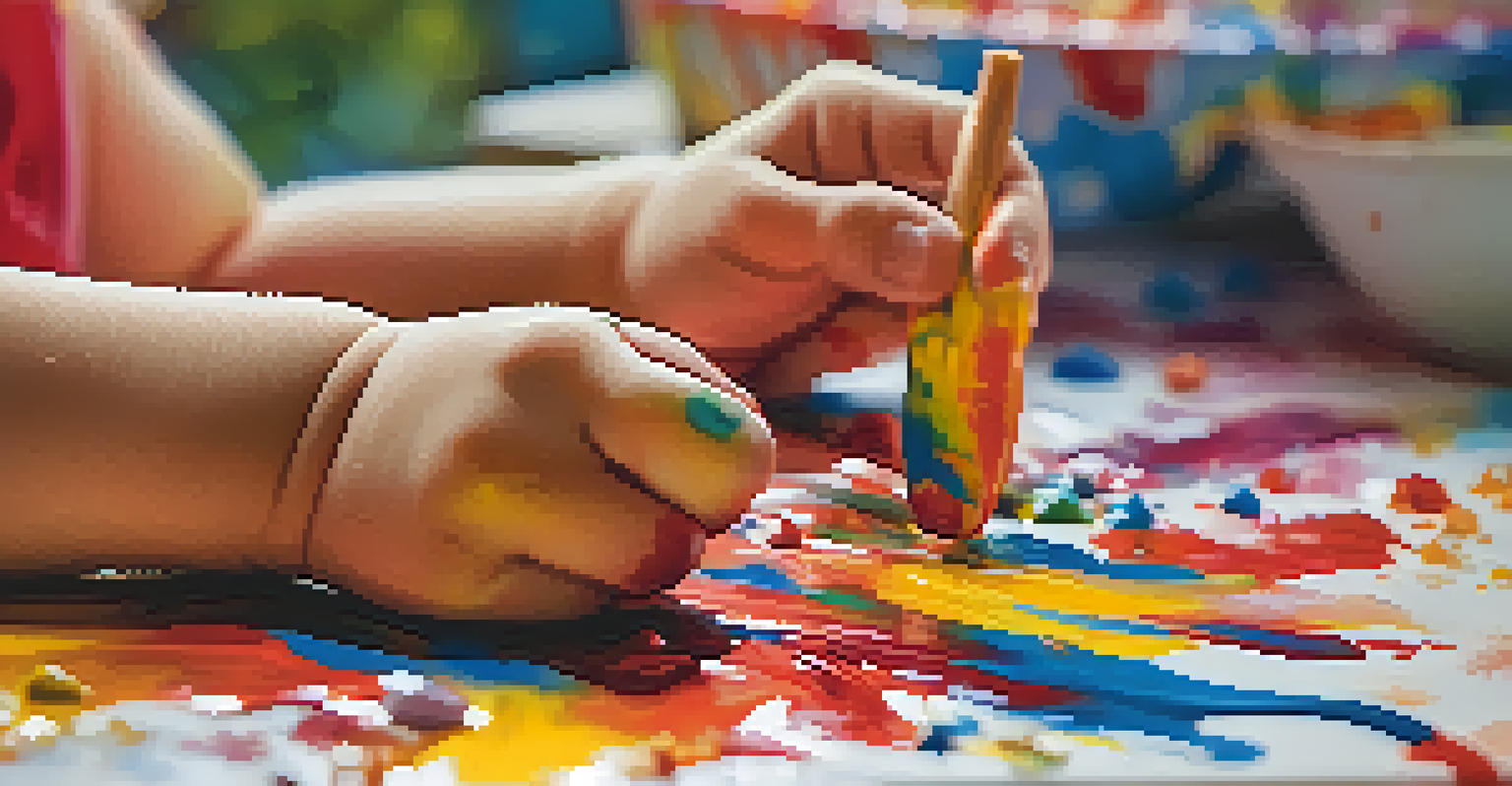Enhancing Fine Motor Skills Through Painting Activities

Understanding Fine Motor Skills and Their Importance
Fine motor skills refer to the small movements we make with our hands and fingers. These skills are crucial for everyday tasks like writing, buttoning shirts, and even using utensils. Developing these skills in early childhood can lead to greater independence and confidence in various activities.
Art enables us to find ourselves and lose ourselves at the same time.
Children naturally enhance their fine motor skills through play and hands-on activities. Engaging in tasks that require precision and control, like painting, helps strengthen the muscles in their hands. This is why early exposure to art can significantly contribute to their developmental milestones.
As children paint, they practice gripping brushes, squeezing paint tubes, and controlling movements, all of which refine their dexterity. This is not just about creating art; it's a foundational building block for skills they will use throughout their lives, from academics to daily chores.
The Benefits of Painting for Fine Motor Development
Painting offers a fun and engaging way for children to practice fine motor skills. When kids dip brushes into paint, they learn to control their grip and apply varying pressure. This encourages the development of hand-eye coordination, which is essential for many tasks.

Additionally, painting requires kids to make precise strokes and movements. Whether it's creating a straight line or filling in a shape, these actions build muscle strength and coordination. The more they practice, the more their skills improve, leading to greater confidence in their abilities.
Fine Motor Skills Matter
Fine motor skills are essential for everyday tasks and can be developed through engaging activities like painting.
Beyond physical skills, painting also boosts creativity and self-expression. As children explore colors and techniques, they not only develop fine motor skills but also learn to express their thoughts and emotions, making art a holistic developmental tool.
Types of Painting Activities to Enhance Skills
There are various painting activities that can effectively enhance fine motor skills. Finger painting is a great starting point, as it allows children to explore textures and colors with their hands. This activity encourages them to use their fingers and palms, which helps strengthen their grip.
Every child is an artist. The problem is how to remain an artist once we grow up.
Using a paintbrush, children can practice different strokes, from broad swipes to delicate lines. This variety challenges their motor control and encourages experimentation. Additionally, using different tools, like sponges or rollers, introduces new techniques and movements that further enhance their skills.
Creative projects like painting on canvas, rocks, or even fabric can also stimulate fine motor development. These diverse mediums offer unique challenges, allowing children to adapt their techniques and improve their dexterity while having fun.
Creating a Painting Space for Skill Development
Setting up a designated painting area can significantly encourage children to engage in these activities regularly. A space with easy access to supplies like brushes, paint, and paper invites exploration. This environment fosters creativity while also providing opportunities for skill enhancement.
Consider using child-sized tables and chairs to make the space comfortable. Having materials within reach allows children to choose how and when they want to create, promoting independence. This arrangement can lead to longer and more focused painting sessions, which are beneficial for skill development.
Painting Boosts Development
Painting enhances fine motor skills while fostering creativity and self-expression in children.
Incorporating elements like aprons and smocks can also make the experience more enjoyable. Not only do they protect clothing, but they also make children feel like real artists, boosting their enthusiasm to paint and practice their skills.
Incorporating Themes and Challenges in Painting
Introducing themes or challenges can add excitement to painting sessions while enhancing fine motor skills. For example, asking children to paint a specific object, like a flower or animal, encourages them to focus on details and shapes. This practice refines their control and precision.
You can also incorporate challenges, such as painting with the non-dominant hand or using larger brushes. These activities push children out of their comfort zones, promoting adaptability and control. The playful competition can make the learning process even more enjoyable.
By varying the themes and challenges, you keep the painting experience fresh and engaging. This not only maintains their interest but also continually develops their fine motor skills in new and exciting ways.
Combining Painting with Other Activities for Skill Boost
Combining painting with other activities can further enhance fine motor skills. For instance, incorporating cutting and gluing can create a mixed-media project. This combination requires different hand movements, which helps develop a more comprehensive set of skills.
Additionally, storytelling can be integrated into painting activities. Ask children to illustrate a scene from a story or create their own narrative while painting. This encourages them to think critically and creatively, which can improve their focus and dexterity.
Create an Inspiring Space
A designated painting area encourages children to explore and practice their skills independently.
These multi-faceted projects offer a rich learning experience, allowing children to practice fine motor skills in a more dynamic context. The blend of activities keeps them engaged while ensuring they are developing a wide range of abilities.
Encouraging Reflection and Discussion After Painting
After completing their painting activities, encouraging children to reflect on their work can be beneficial. Ask them about their choices, techniques, and the emotions they felt while painting. This dialogue not only fosters communication skills but also reinforces their learning experience.
Discussing their artwork allows children to articulate their thoughts and decisions, which can enhance their cognitive skills. It also helps them develop critical thinking as they analyze their creations and consider what they might do differently next time.

Reflection turns painting from a simple activity into a comprehensive learning experience. By discussing their work, children gain insights into their own progress, reinforcing the connection between fine motor skills and creative expression.